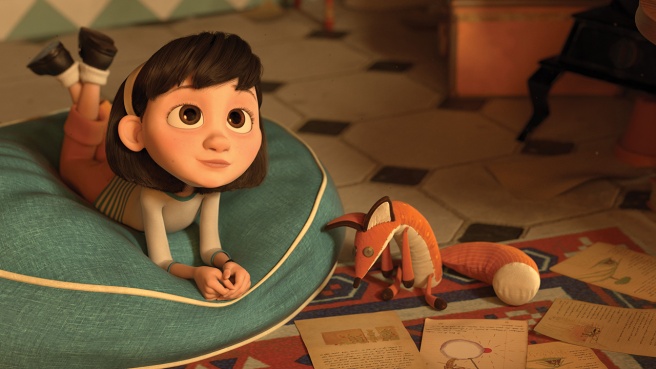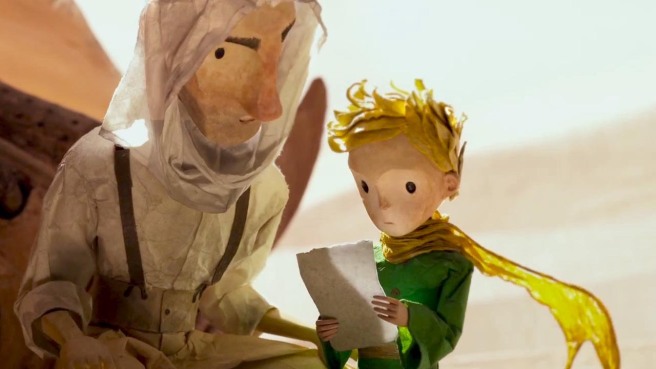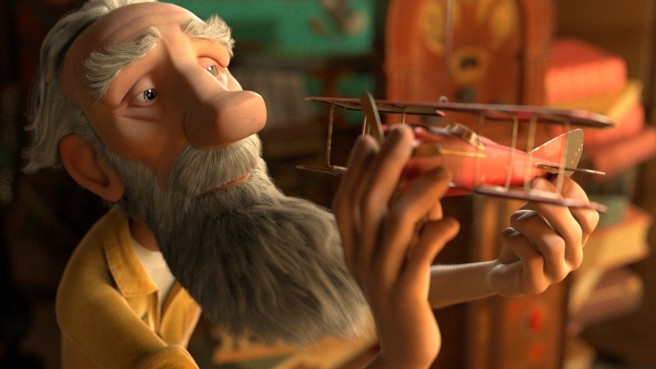
A book is not a movie, and a movie is not a book. People equate film and literature all the time because they are the media through which stories are told, but the means they use to tell these stories are very different. A book is at liberty to say, “Anything essential is invisible to the eye” (Saint-Exupéry The Little Prince), but film at its core is visual, based on action: things that people do, things that people say. Literature on the other hand can enter the realm of the mind, probing into the minds of its characters, laying bare their thoughts to the reader, who in turn sees it all in their own mind’s eye. In order to adapt a book into a film fundamental changes must be made, something that fans of a book can find hard to understand sometimes. You cannot just transcribe a book into screenplay format, it has to be condensed, restructured, and made visual, but what must remain in a good adaptation is the spirit of the book. That is what is sacred, and that is what needs to survive any cuts, changes and alterations. It is this fact that makes adaptation a very tricky art. Mark Osborne’s new film of Antoine de Saint-Exupéry’s beloved The Little Prince (coming to Netflix August 5) balances on this high wire.
 The Little Prince begins with a drawing of an elephant being digested by a boa constrictor. The anecdote illustrates the thesis of the book: “Grown-ups never understand anything by themselves, and it is exhausting for children to have to provide explanations over and over again” (Saint-Exupéry The Little Prince). The film lovingly brings this opening image to life, and fans of Saint-Exupéry’s naive drawings will thrill at seeing the elephant, exact in every detail, blink her eye as she resignedly waits for the six months of digestion. The opening reassures us that the spirit of Saint-Exupéry is alive, before launching us into the structured, modern life of a little girl, because Mark Osborne’s Little Prince is not exactly Saint-Exupéry’s. Osborne explains, “It was all born out of the book… The book was so important to me and important to many people and I also knew that it’s different for everybody. Everybody has their own version. So you can’t really make a film of the book. So that’s when I started to think… maybe I should put the book into somebody’s imagination.” (Vida Weisblum The Observer, 8/1/16)
The Little Prince begins with a drawing of an elephant being digested by a boa constrictor. The anecdote illustrates the thesis of the book: “Grown-ups never understand anything by themselves, and it is exhausting for children to have to provide explanations over and over again” (Saint-Exupéry The Little Prince). The film lovingly brings this opening image to life, and fans of Saint-Exupéry’s naive drawings will thrill at seeing the elephant, exact in every detail, blink her eye as she resignedly waits for the six months of digestion. The opening reassures us that the spirit of Saint-Exupéry is alive, before launching us into the structured, modern life of a little girl, because Mark Osborne’s Little Prince is not exactly Saint-Exupéry’s. Osborne explains, “It was all born out of the book… The book was so important to me and important to many people and I also knew that it’s different for everybody. Everybody has their own version. So you can’t really make a film of the book. So that’s when I started to think… maybe I should put the book into somebody’s imagination.” (Vida Weisblum The Observer, 8/1/16)
In Mark Osborne’s film we see the book through the eyes of this 9 year-old girl, whose life has been organized and planned out down to second by her mother who projects her own fear of abandonment onto her daughter. This story is told in the computer animated style that we as audiences have become accustomed to in the past 20 years, and it takes full advantage of the medium. The precise, slightly anonymous look of the CGI creates a cold structured world of grey boxes around our heroine, but Osborne also knew that for the story of the Little Prince “CGI is the wrong medium, the book is too poetic.” (Vida Weisblum The Observer, 8/1/16) He needed something else for Saint-Exupéry’s tale, and he created it through the use of paper-maché puppets. As the girl discovers the story piece by piece through her friendship with the old aviator next door we fall into a beautiful handcrafted world of color and paper. The stop-motion animation does not mimic Saint-Exupéry’s drawings so much as evoke them through their tactile sketchiness and deceptive simplicity. Using the medium of paper to literally take us inside the book is genius. There are few things you will see in the movies this year as beautiful as these vignettes, designed by Alexander Juhasz and co-directed by Jamie Caliri.

I don’t think any fan of The Little Prince will be able to find fault with how they chose to adapt these parts, it is the addition of the story of the girl and the aviator, now grown old, that can prove controversial. Purists will ask if it was really necessary, to which I say, yes – if they wanted to get the budget to make a feature length film seen around the world. But also it is of value because the girl’s story is in itself an adaptation of The Little Prince, but the inverse. In her story she is the aviator and the aviator is given the chance to be the prince, or in the words of Mark Osborne “the book is about a middle aged man who is broken who is fixed by this magical little boy, but now we’re telling the same story but upside down and backwards, because now we have this broken little girl, who’s a grown up. But she’s little. And she’s fixed by this magical old man, who embodies the spirit of the little prince. He’s the only character in this world that has met the little prince. So that was the way to echo the book and mirror the book, and kind of give a new approach to those same themes and ideas, so, yeah at it’s base, the larger story that we’re telling is a novel retelling of the book in way.” (Vida Weisblum The Observer, 8/1/16) In the end The Little Prince is a faithful adaptation, faithful in spirit if not always in fact, and sometimes with film that is the only way to do it.

“I knew that it was going to be impossible to please everyone who loves the book, but I believed it was possible to create a loving tribute that would celebrate the book and what it means to so many people that have read it and loved it.” – Mark Osborne, Director (Daniel Todoran-Rares AnimationMagazine.eu, 2/20/16)
